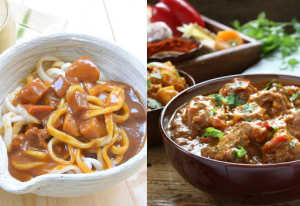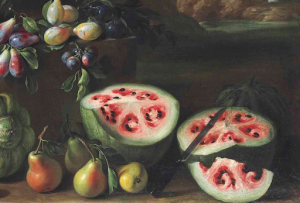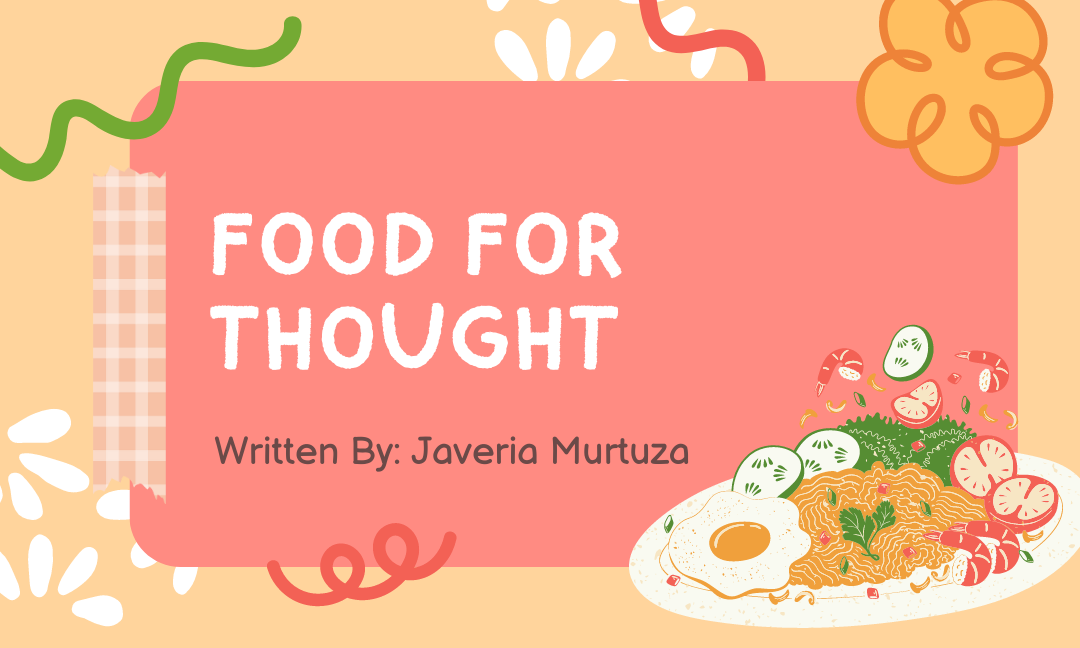Written By: Javeria Martuza
Edited By: Jiya Mehta
Designed By: Jiya Mehta
Published By: Rayna Almas
“You are what you eat,” is a phrase that has been echoed so often that it’s been etched into our minds. It preaches a straightforward message: Eat healthy to be healthy. So you’d be surprised to hear this simple concept has been pondered over by philosophers of the likes of Plato and Marx. The research about ethics, aesthetics, politics, social impact, and identity of food have culminated over thousands of years under a branch known as “Food Philosophy”. When a philosopher says, “You are what you eat”, they are not only concerned with the health benefits of food, but also the moral, social, political, and agricultural systems the food is part of.
Philosophy is a subject where agreements are nonexistent. If you like arguing, it’s for you. So if you see a group of philosophers agreeing on something, there are two possibilities: either they are possessed by a dark force or you’re witnessing a rare, once-in-a-lifetime occurrence. My once-in-a-lifetime opportunity came when I discovered most philosophers agree that food is a mirror. We, in one way or another, are what we eat.

Different veganism diets (thebitingtruth.com)
One of the most popular moral dilemmas when it comes to food is veganism. The debate on veganism ultimately boils down to main sides: to refrain from eating animals because they’re conscious beings or to eat animals because it keeps the food chain balanced. Like all things philosophy, there are multiple more arguments. Some people are willing to eat animals as long as they’re treated properly and are killed painlessly. Others argue that there should be a limit to consuming meat. Meanwhile, another group of people wonder what moral code defines what we can and can’t eat.
An individual’s morals on food may help others shape an opinion on them. That opinion varies from person to person. Interestingly, it also varies on the time period. A few decades ago, someone getting frustrated over the food wasted during a food fight would be called a stingy party pooper. Now, as we’ve grown more aware about our carbon footprints and its effects on global food insecurity, the kid would be praised for being concerned about other people and the Earth.
Let’s go back a few decades again. The kid being called stingy clearly can’t stand wasting food, so they won’t be able to eat with thriftless people. However, they will earn the respect of other frugal people. Since they all share the same views, they will be more comfortable eating together. This is just one example of how food influences an individual’s social life. If my diet consisted of paper, you’ll be less likely to become friends with me because then you’ll have to eat paper when we hang out together. In a broader view, this is also one of the main factors that separates cultures. For example, Southeast Asians prefer to eat spicy foods, and people with a lesser spice tolerance are less likely to go out to dinner with them.

Japanese curry (left) and Indian curry (right) (tastylicious.com)
Another thing that separates cultures is the aesthetics of a culture’s food. More specifically, the appearance, texture, and smell of a food helps define the culture it’s from. For example, curry originated in India before it reached other countries. These countries made their own variations of curry to suit their preferences. For example, Japanese curry is thicker in texture but milder in taste. Jamaican curry has a much lighter colour compared to Indian curry, which is more often a sharp red in colour. Pakistani curries are generally more spicy than their Indian counterparts. Even though the base recipe is the same, small variations reflect the preferences of the culture that adapted the recipe.
Food aesthetics aren’t only significant in cultures. They’re also how we judge the taste of food before we eat them. Food businesses are aware of this, which is why grocery markets stock their shelves with fruits and vegetables that look like how we imagine them. Any food that has abnormalities in shape, colour, or texture, is thrown out even if it was perfectly healthy to eat. This is because most of us would be more hesitant to eat food that doesn’t fit the image we have of it. Businesses get rid of these types of foods in an effort to preserve their image. In total, grocery stores are responsible for 1.31 tonnes of food wasted every year.
The foods that do make their way to grocery store shelves aren’t organic. Lots of them are processed to look more appealing. For example, apples have a layer of wax coated on them to look shinier. This is true for apples with the “organic” sticker on them as well. Organic apples are often coated with a layer of either carnauba wax or wood rosin. These waxes are derived from plants, but aren’t organic. Still, the companies processing these apples aren’t breaking any laws because they’re allowed to use these two specific waxes to preserve the fruit’s moisture.

Apple with no wax coating (left) versus with a wax coating (right) (artisincakes.com)

Watermelons in the 17th century
This also raises the question of what the criteria for “organic” is. The most common definition would be “naturally occurring,” but that would mean lots of common foods aren’t organic. Citrus fruits like lemons and oranges aren’t natural; they’re man-made hybrids derived from mandarin, pomelo, papeda, and citron. In addition, lots of naturally occurring foods evolved depending on how they were domesticated. A 17th century painting by Giovanna Stanchi depicts watermelons to look like a strange combination of apples and oranges, just with thick green skin. It took hundreds of years of breeding for them to look like what they do today.
This article just scratched the surface. Studying food presents hundreds of open-ended questions on morality, ethics, culture, and a lot more, with most of these questions never having definite answers. Studying and understanding food may not answer them, but it will help shape the world into a more sustainable place. If food wasn’t studied, no one would know the consequences of wasting it, its importance to culture, and the effects of its evolution. Food is an important field of study, and every individual must have a basic level of understanding about it to truly appreciate its significance in our lives.
_______________________________________
Sources
https://food.unt.edu/philfood/
https://ireadencyclopedias.wordpress.com/2015/06/04/does-this-fruit-exist-in-nature/
https://wigglywisdom.com/do-organic-apples-have-wax/

